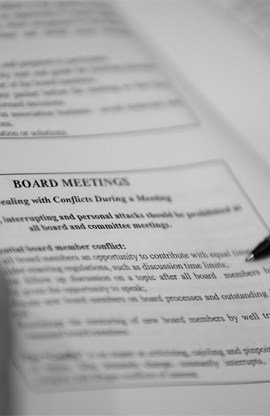By Beth Mulcahy, Esq.
In my opinion, the best way to get a tenant to comply with the documents is to aggressively pursue the owner for the tenant’s violations. Most association documents state that a landlord/owner is responsible for the behavior of their tenants and guests. Once the landlord/owner figures out that the tenant is starting to cost the landlord/owner more money than the tenant is paying, the landlord/owner will likely evict or ask the tenant to leave the property.
I suggest the following actions by a board in this situation:
- Step One: Send a Courtesy Violation letter to Owner. When a violation occurs, the board of directors or management company should send a courtesy violation letter and/or posts a notice on the property regarding the violation. The letter should contain the owner’s name, lot/unit number, the time the violation was noted, specific violation, compliance date, who noted the violation and information regarding the right to appeal or be heard. Contact information for the management company or association contact should also be included. This letter, in most cases, results in the owner addressing the problem immediately.
- Step 2: Send a Formal Violation letter to Owner.If the violation is not corrected by the compliance date requested, the next step is for the board, management company, or association attorney to send a formal violation letter stating the fines that could be assessed against the owner if the violation is not corrected. This letter should also contain the dates of first and last inspection and the new compliance date. At this time the owner is again notified of his/her right for the opportunity to be heard (response letter form or appearance by the owner at a board meeting), and given contact information should the owner choose to be heard (refute the violation) at the next board of directors meeting
- Step 3: Fine the Owner. Under Arizona Law, after notice (the violation letter) and an opportunity to be heard, an association or board of directors may impose reasonable monetary penalties on members for violations of the association’s declaration. Associations can enforce payment of these fines by: a. Filing a lawsuit against the owner; b. Obtaining a judgment against the owner; and c. Recording the judgment with the county recorder’s office. After the judgment is recorded, the association will have a judgment lien that is effective upon conveyance (or paid at the time of the sale of the lot/unit). In addition, associations may proceed with collection of the judgment through traditional collection means, such as bank, wage or rent garnishment.
- Step 4: Consider Litigation. Litigation may be the only alternative for an association to correct a violation An association has the right to file an equitable claim for relief with Superior Court. In most cases, the judge will order that the violating owner cease from taking action or require the owner to take action. Often, if the association prevails in the lawsuit, the association will be awarded its reasonable attorneys’ fees and costs for the lawsuit.
Good luck, please let our firm if we can assist you with this process.
